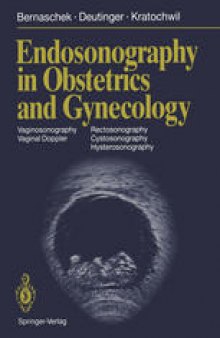 جزییات کتاب
جزییات کتاب
More than 25 years ago, when ultrasound diagnostic methods were first intro duced into gynecology and obstetrics, few of the pioneers of these techniques sus pected what importance sonographic diagnosis was destined to assume. It was soon recognized that the organs of the lesser pelvis could be visualized to much greater advantage by inserting probes into the natural bodily orifices than by abdominal sonography. Full exploitation of the physical properties of ultra sound had to wait, as so often in the history of sonography, for technological ad vances. Endosonography in the form available to us today combines the advantages of endoscopy and sonography. The next light-reflecting surface, once the limit of en doscopy, represents no barrier to ultrasound. A whole range of both diagnostic and therapeutic procedures can be sonographically guided. Blood flow in vessels lying deep in the lesser pelvis can now be measured by means of vaginal duplex sonography.



 دانلود کتاب
دانلود کتاب

 جزییات کتاب
جزییات کتاب

 این کتاب رو مطالعه کردید؟ نظر شما چیست؟
این کتاب رو مطالعه کردید؟ نظر شما چیست؟
